#Cathedral Church of Saint Peter
Text

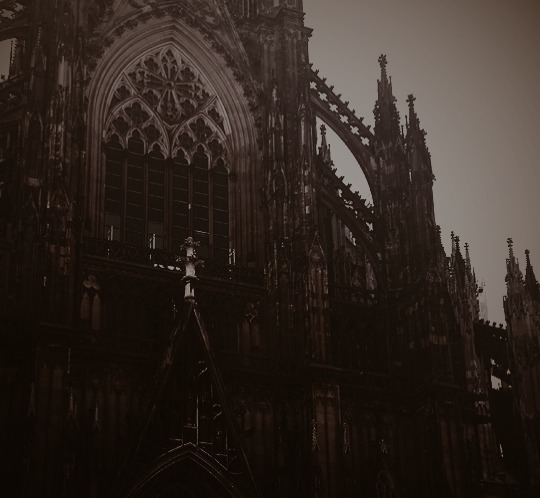
Cologne Cathedral, Germany.
#Cologne Cathedral#Kölner Dom#Cathedral Church of Saint Peter#Germany#cathedral#Cologne#North Rhine-Westphalia#Gothic architecture#Catholic Church#German Kölner Dom#Gothic cathedral
95 notes
·
View notes
Text
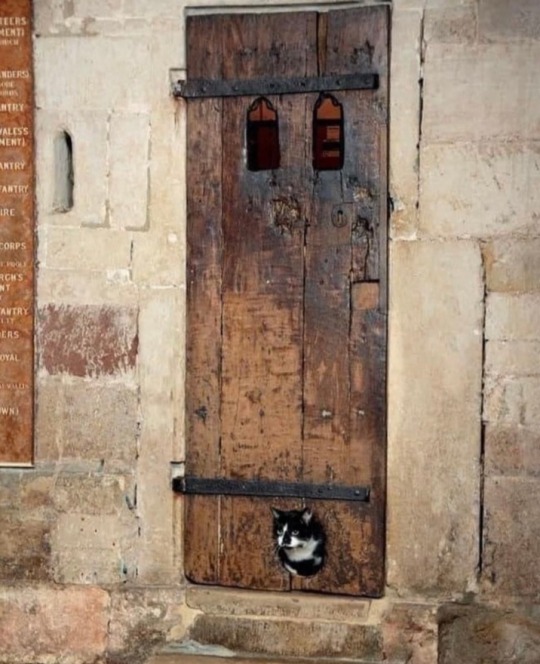
This 14th-century door located at Exeter Cathedral in the UK is believed to be the earliest known example of a cat flap.
Historical records from the medieval period reveal that cats had significant roles within various cathedrals, as they were tasked with keeping the premises free of mice.
These cats were even included on the payroll, with funds allocated to support their food if their mouse-catching performance fell short.
In the financial records of Exeter Cathedral, it is documented that during the 15th century, they had a resident cat designated for mouse control, earning approximately one penny per week (equivalent to thirteen pennies every quarter).
Notably, between 1363 and 1366, the quarterly payment for this feline doubled to twenty-six pence, indicating the possibility that the cathedral temporarily bolstered its mousing efforts by employing a second cat.
—
Exeter Cathedral, properly known as the Cathedral Church of Saint Peter in Exeter, is an Anglican cathedral and the seat of the Bishop of Exeter, in the city of Exeter, Devon, in South West England.
The present building was complete by about 1400 and has several notable features, including an early set of misericords, an astronomical clock, and the longest uninterrupted medieval stone vaulted ceiling in the world.
32 notes
·
View notes
Photo

Classic and Modern
#logan square#pennsylvania#church#cityscape#black and white#cathedral basilica of saints peter and paul#philadelphia#philly#january#my work#photography
12 notes
·
View notes
Video
Winchester Cathedral by Tony
Via Flickr:
You're bringing me down You stood and you watched as My baby left town You could have done something But you didn't try You didn't do nothing You let her walk by
#England#Winchester#architecture#britain#cathedral#church#europe#geo:lat=51.06106064#geo:lon=-1.31452466#geotagged#religion#wiltshire#©2022 Tony Sherratt#structure#Church of the Holy Trinity#Saint Peter#Saint Paul and Saint Swithun#norman
7 notes
·
View notes
Text
Stare Miasto Kraków Poland

View On WordPress
#Bishop Stanislaus Patron Saint of Poland#Eyeless Head Sculpture Igor Mitoraj#Hejnał Mariacki Trumpet Signal#Igor Mitoraj Polish Artist and Sculptor#King Sigismund I the Old#Kraków Market Square#Kraków Old Town#Rynek Główny#Sigismund Bell#St. Mary&039;s Basilica Krakow#St. Peter & Paul&039;s Church Kraków#St. Stanislaus#Stare Miasto#Wawel Castle#Wawel Hill#Wawel Royal Cathedral
0 notes
Photo
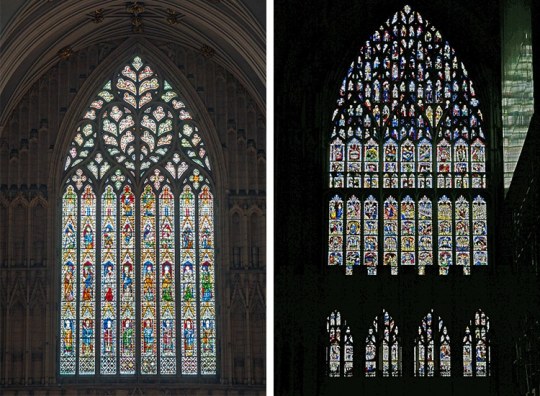
YORK MINSTER – BUILT IN THE 15TH CENTURY, YORK, ENGLAND
The Cathedral and Metropolitical Church of Saint Peter in York, better known as the York Minster, is a striking 15th-century cathedral completed in 1472. It features a remarkable collection of stained glass, some of which dates back to the 12th century. Its most noticeable attribute is the Great East Window. Created by John Thornton, this piece depicts scenes from the Book of Revelation and is the largest expanse of medieval stained glass in England.
Left: The Great West Window, York Minster, York, England (Photo: Peter K Burian via Wikimedia Commons, CC BY-SA 4.0)
Right: The Great East Window, York Minster, York, England (Photo: amandabhslater via Wikimedia Commons, CC BY-SA 2.0)
#peter k burian#the great west window#york minster#stained glass windows#york#england#amandabhslater#wikimedia commons#cathedral and metropolitan church of saint peter#cathedral#architecture#john thornton#history#culture
1 note
·
View note
Text
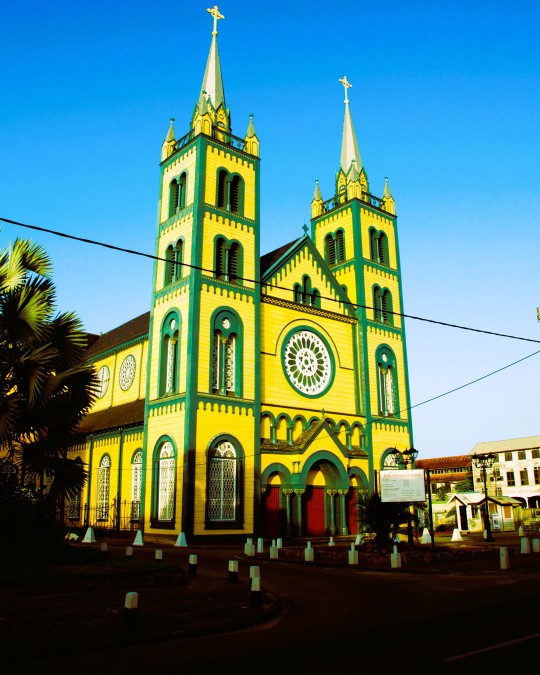
St. Peter and Paul Cathedral, Paramaribo, Suriname: The Cathedral-Basilica of Saint Peter and Paul also called Saint Peter and Paul Cathedral is a wooden Roman Catholic cathedral located in the centre of the capital city of Paramaribo, Suriname. The Catholic congregation in the city originally used a church adapted in 1826 from a Dutch Jewish theatre built in 1809. Wikipedia
71 notes
·
View notes
Text

The Cathedral-Basilica of Saint Peter and Paul also called Saint Peter and Paul Cathedral is a wooden Roman Catholic cathedral located in the centre of the capital city of Paramaribo, Suriname. The Catholic congregation in the city originally used a church adapted in 1826 from a Dutch Jewish theatre built in 1809. Wikipedia
19 notes
·
View notes
Text
Today in Christian History
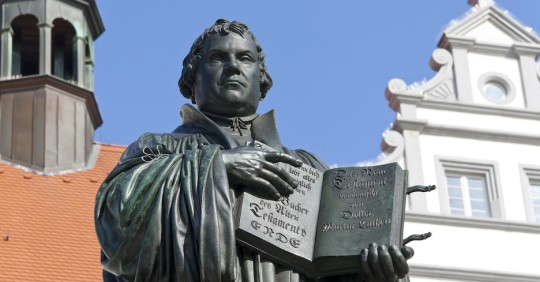
Today is Tuesday, October 31st, 2023. It is the 304th day of the year (305th in leap years) in the Gregorian calendar; 61 days remain until the end of the year.
415: Co-emperors Honorius and Theodosius II issue penalties against Montanists and against any land-owner who permits them to assemble on his property. Montanist meeting places are to be turned over to orthodox churches.
1517: Martin Luther (pictured above) nails a challenge to a debate on the Wittenberg church door. It consists of ninety-five statements, or theses, against the practice of indulgences—theses which he is willing to defend. The theses will be widely distributed and precipitate the Reformation.
1731: Catholic archbishop Leopold von Firmian of Salzburg, Austria, issues an edict expelling all Lutherans from his territory. About twenty thousand people have to leave. Many have nowhere to go and freeze to death in the coming winter.
1754: Provost Acrelius writes to the Consistory of Upsala, requesting the suspension of Rev. John Lidenius from the Swedish ministerial office because he preaches in English.
1772: Thomas and Samuel Green of New Haven publish “A Sermon” by Indian preacher Samson Occum which he had given the month before at the hanging of an Indian man for murder. The sermon becomes wildly successful, going through ten editions in eight years.
1816: Robert Moffat sails for South Africa where he will establish a mission work. Mission leaders had been reluctant to send him, believing he was unqualified. He will become a world-famed mission leader.
1832: George Washington Doane is consecrated Episcopal bishop of a diocese in New Jersey. He will be remembered by Christians for his hymns, especially “Softly Now the Light of Day.”
1871: Vasilii Ivanov is baptized in Tbilisi, Georgia, in the Kura River, an event considered the starting point of the Baptist movement in Azerbaijan, because he will spread the Baptist faith throughout Baku province.
1877: Samuel Schereschewsky is consecrated Anglican Bishop of Shanghai. Developing Parkinson’s disease, he will resign his position, and spend the rest of his life completing a translation of the Bible into Wenli (a Chinese dialect), typing hundreds of pages with the one finger that he could still move.
1879: Death of Jacob Abbott, American Congregationalist author. He wrote many groundbreaking works of children’s fiction, including the instructional Rollo series and the warm Franconia novels.
1920: Baptism of Spetume Florence Njangali in Saint Peter’s Cathedral, Hoima, Uganda. She will become a leader in the effort to obtain theological education for women and their ordination as deaconesses in the Anglican church of Uganda.
1992: Pope John Paul II admits that the Roman Catholic church erred three hundred and sixty years earlier when it condemned Italian astronomer Galileo.
1999: Catholics and Lutherans issue a joint statement on justification in Augsburg, Germany, declaring that “a consensus in basic truths of the doctrine of justification exists between Lutherans and Catholics.”
2010: Islamic terrorists besiege Our Lady of Perpetual Help Church in Baghdad, massacring most of the 120 worshipers inside, including a three year old boy who pleaded with them to stop killing.
13 notes
·
View notes
Text
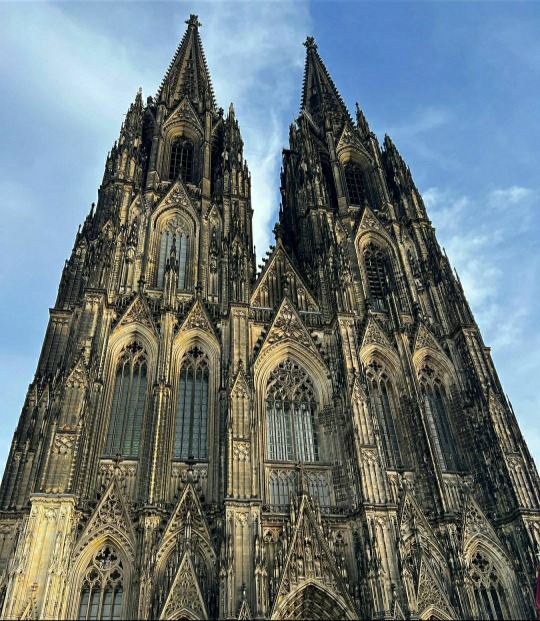



𝔎ö𝔩𝔫𝔢𝔯 𝔇𝔬𝔪𝔢
📷 𝔄𝔫𝔡𝔯𝔢𝔞𝔰 𝔎𝔦𝔰𝔰𝔢𝔯
#Kölner Dome#Cologne Cathedral#goth architecture#neo gothic architecture#gothic architecture#architecture#details#detail#cathedral#germany#Catholic cathedral#German Catholicism#Cathedral Church of Saint Peter#Deutschland
116 notes
·
View notes
Text
SAINT OF THE DAY (February 24)
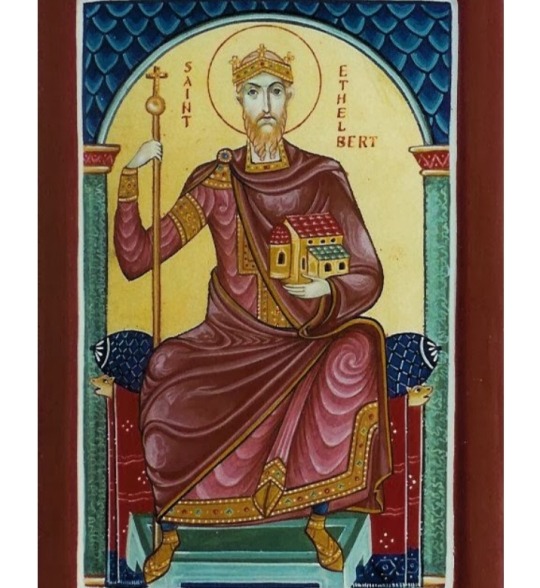
Today is the feast of St. Ethelbert, king of Kent, a descendant of Hengist, who led the Angles, Saxons, and Jutes into England.
Ethelbert was born in 552. He was a worshipper of Odin, but in 588, when he married Bertha, a daughter of King Charibert of Paris, as part of the nuptial agreement, he agreed to permit her to continue practicing her Christian faith.
Bertha brought a chaplain to England with her, and King Ethelbert gave him an old church at Canterbury.
In 597, Pope St. Gregory the Great sent St. Augustine to England to convert the pagans.
Ethelbert allowed Augustine and his forty Benedictine monks to stay. He gave them a house at Canterbury.
Ethelbert asked Augustine to instruct him and to baptize him, but he did not compel his people to embrace Christianity.
His example led to the baptism of 10,000 of his countrymen within a few months.
He supported Augustine in his missionary work with land, finances, and influence.
King Ethelbert gave Archbishop Augustine land for his episcopal see in Canterbury.
He built the church dedicated to St. Paul in London, which would become St. Paul's Cathedral.
The Law of Æthelberht, a code attributed to him, is a set of legal provisions written in Old English, probably dating to the early 7th century.
It originates in the kingdom of Kent and is the first Germanic-language law code.
King Ethelbert died on 24 February 616.
He was buried with Queen Bertha in the Abbey Church of Saint Peter and Saint Paul. His relics were later translated to Canterbury.
A candle burned before their tomb until the Reformation.
He was later regarded as a saint for his role in establishing Christianity among the Anglo-Saxons.
In the Roman Martyrology, he is listed under his date of death, February 24, with the citation:
"King of Kent, converted by St Augustine, Bishop, the first leader of the English people to do so."
7 notes
·
View notes
Text
⛧ 𝔇𝔢𝔳𝔦𝔩 ℑ𝔫 𝔗𝔥𝔢 𝔇𝔢𝔱𝔞𝔦𝔩𝔰 ⛧

The Church.
The cathedral was rich with hallowed symbolism, from the marble stone carvings of angels gracing the pillars and belfries to the vivid and variegated painted windows depicting scenes of saints and prophets of old–to even the very structure in which the cathedral was built.
The narthex, a covered porch-like structure or an inside area separated from the nave–a symbol of the entryway into the gates of Paradise, the nave itself where the parishioners sit or stand referring to the ‘barque of Peter’ and ‘Noah’s Ark, the crossing where the nave, chancel, and transept intersect represents the cross of which The Son of Man gave his life. The sanctuary in which the choir sings their ethereal melodies exemplifies the great gathering of celestial bodies singing the praises of The Almighty, and of course, the altar–the place of the journey into the soul, of redemption, recognition of the self, humbleness before God.
Truly, a wee fragment of the glory awaiting the faithful in Paradise.
But here, all that had faded like dust in the wind. This once place of sanctity had long since been stripped of its holiness, The floors and columns of marble, once permeating with the saccharine scent of frankincense and myrrh, now reek with the funk of rot and decay. The seats of the congregation scattered about the aisles and naves, their wood of mahogany splintering and withering as they submit to the power of time's cruelty. The stained windows above the buttresses and apse were coated with dust, their splendor dulling, the vibrancy of the once pious place of worship had greatly dimmed as if all the divinity and holy energies that seeped through its stone like the crimson lifeblood of man had been completely sapped out, leaving it a dead, hollow corpse.
It was more than quiet; it was one that was once inconceivable and thought impossible to exist. It was a primordial silence that graced all that was once nothingness itself, a sea of black, the tempest of Oblivion. A perfect silence. Then, from the depths of that silence breaking like how a mallet shatters through a feeble glass, came…A VOICE…
"𝑺𝒂𝒍𝒖𝒕𝒂𝒕𝒊𝒐𝒏𝒔~"
Deep was it, like the distant beating of thunder, the gentle rolling of war drums, and yet was sweet in its huskiness. Its reverberation was all-embracing as if the voice was everywhere and nowhere all at once. When Safire's eyes surveyed the nave amidst the empty seats, she would see, to her surprise, someone sitting three rows down from the front. The man was hidden behind the soles of hooked-toe boots of black leather, and his features were obstructed by a book, its cover white with bold golden words inscribed upon the cover.
HOLY BIBLE
"𝑩𝒆𝒂𝒖𝒕𝒊𝒇𝒖𝒍….𝒘𝒂𝒔𝒏'𝒕 𝒊𝒕?…𝒗𝒆𝒓𝒚 𝒎𝒖𝒄𝒉 𝒍𝒊𝒌𝒆 𝒇𝒂𝒊𝒕𝒉…𝒇𝒂𝒊𝒕𝒉 𝒖𝒑𝒐𝒏 𝒕𝒉𝒆 𝒔𝒖𝒓𝒇𝒂𝒄𝒆 𝒄𝒂𝒏 𝒃𝒆 𝒃𝒆𝒂𝒖𝒕𝒊𝒇𝒖𝒍…𝒃𝒖𝒕 𝒕𝒊𝒔 𝒇𝒊𝒄𝒌𝒍𝒆 𝒍𝒊𝒌𝒆 𝒑𝒂𝒓𝒄𝒉𝒎𝒆𝒏𝒕. 𝑰𝒕 𝒄𝒂𝒏 𝒃𝒆 𝒔𝒕𝒂𝒊𝒏𝒆𝒅, 𝒕𝒐𝒓𝒏, 𝒓𝒊𝒑𝒑𝒆𝒅, 𝒃𝒖𝒓𝒏 𝒂𝒏𝒅 𝒘𝒊𝒕𝒉𝒆𝒓. 𝑳𝒊𝒇𝒆’𝒔 𝒕𝒓𝒊𝒂𝒍𝒔 𝒊𝒔 𝒐𝒇𝒕𝒆𝒏 𝒕𝒉𝒐𝒖𝒈𝒉𝒕 𝒕𝒐 𝒃𝒆 𝒂 𝒕𝒆𝒔𝒕 𝒐𝒇 𝒇𝒂𝒊𝒕𝒉, 𝒂𝒏𝒅 𝒕𝒉𝒆𝒓𝒆’𝒔 𝒐𝒏𝒍𝒚 𝒔𝒐 𝒎𝒖𝒄𝒉 𝒐𝒏𝒆 𝒄𝒂𝒏 𝒉𝒐𝒍𝒅 𝒐𝒏𝒕𝒐 𝒖𝒏𝒕𝒊𝒍 𝒓𝒆𝒂𝒍𝒊𝒕𝒚 𝒔𝒆𝒆𝒑𝒔 𝒕𝒉𝒓𝒐𝒖𝒈𝒉 𝒕𝒉𝒆 𝒑𝒂𝒓𝒄𝒉𝒎𝒆𝒏𝒕 𝒂𝒏𝒅 𝒓𝒆𝒗𝒆𝒂𝒍 𝒊𝒕’𝒔 𝒕𝒓𝒖𝒆 𝒏𝒂𝒕𝒖𝒓𝒆. 𝑨 𝒕𝒆𝒎𝒑𝒍𝒆 𝒐𝒇 𝒅𝒆𝒄𝒆𝒊𝒕”
@thelittlestdemon
11 notes
·
View notes
Text

Icon "Holy Blessed Prince Alexander Nevsky before the Lord." Russia, the second half of the XIX century.
Wood, levkas, tempera, gilding.
Dimensions: 22.5x17.5 cm.
Minor traces of living, small scuffs of the paint layer.
Holy Prince Alexander Nevsky is depicted standing with a spear in prayer to the Lord, who blesses the prince before the battle. The prince is depicted in grand duke's clothes and attributes of power. This iconographic manner was especially common in the Russian Empire after the decree of the Holy Synod of Peter I "from now on, that saint in the monastic person should not be written to anyone - and where to send strong decrees from the Synod, and to the Senate for news to inform the knowledge immediately. And to write that holy image in the clothes of the grand duke."
Alexander Yaroslavovich Nevsky (1220 - 1264; Memorial Day - December 6 and September 12) - Prince of Novgorod, Pereyaslavl, Grand Duke of Kiev (since 1249), Grand Duke of Vladimir (since 1252), Russian commander. Canonized by the Russian Orthodox Church as the Righteous under Metropolitan Macarius at the Moscow Cathedral in 1547. They pray to him for protection and patronage, for strengthening of faith and strengthening in the affairs of life, for the gift of wisdom and much more, as well as servicemen for safe service, protection and courage.
Alters
7 notes
·
View notes
Video
Setting off on Holiday by Tony
Via Flickr:
It’s always great to make the journey part of the holiday. First stop off was in Winchester The Cathedral Church of the Holy Trinity, Saint Peter, Saint Paul and Saint Swithun, commonly known as Winchester Cathedral, is the cathedral of the city of Winchester, England, and is amongst the largest of its kind in Northern Europe.
#England#Winchester#architecture#britain#cathedral#church#europe#religion#wiltshire#©2022 Tony Sherratt#structure#Church of the Holy Trinity#Saint Peter#Saint Paul and Saint Swithun#norman
6 notes
·
View notes
Text
Saints&Reading: Monday, March 25, 2014
march 12_march25
SAINT GREGORY THE DIALOGIST, POPE OF ROME (604)
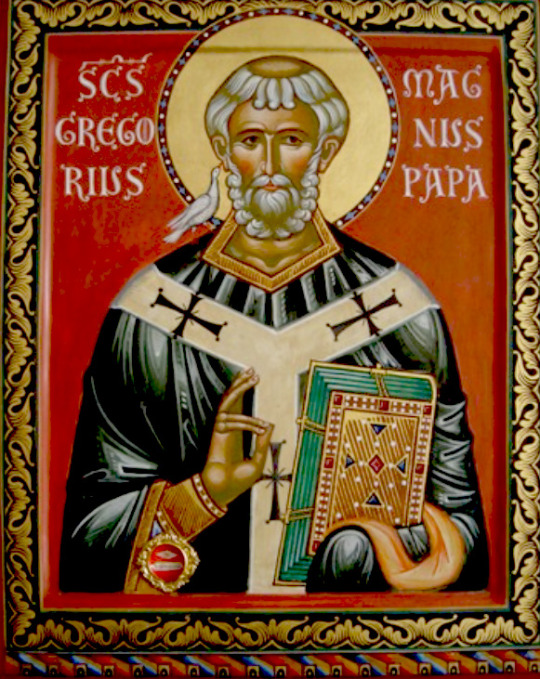
Saint Gregory the Dialogist, Pope of Rome, was born in Rome around the year 540. His grandfather was Pope Felix, and his mother Sylvia (November 4) and aunts Tarsilla and Emiliana were also numbered among the saints by the Roman Church. Having received a most excellent secular education, he attained high government positions.
Leading a God-pleasing life, he yearned for monasticism with all his soul. After the death of his father, Saint Gregory used his inheritance to establish six monasteries. At Rome he founded a monastery dedicated to the holy Apostle Andrew the First-Called, where he received monastic tonsure. Later, on a commission of Pope Pelagius II, Saint Gregory lived for a while in Constantinople. There he wrote his Commentary on the Book of Job.
After the death of Pope Pelagius, Saint Gregory was chosen to the Roman See. For seven months he would not consent to accept this service, considering himself unworthy. He finally accepted consecration only after the persistent entreaties of the clergy and flock.
Wisely leading the Church, Saint Gregory worked tirelessly in propagating the Word of God. Saint Gregory compiled the Liturgy of the Presanctified Gifts in the Latin language, which before him was known only in the verbal tradition. Affirmed by the Sixth Ecumenical Council, this liturgical service was accepted by all the Orthodox Church.
He zealously struggled against the Donatist heresy; he also converted the inhabitants of Brittany, pagans and Goths, who had been adhering to the Arian heresy, to the True Faith.
Saint Gregory has left behind numerous written works. After the appearance of his book, DIALOGUES CONCERNING THE LIFE AND MIRACLES OF THE ITALIAN FATHERS (DIALOGI DE VITA ET MIRACULIS PATRUM ITALIORUM), the saint was called “Dialogus.” His PASTORAL RULE (or LIBER REGULAE PASTORALIS) was well-known. In this work, Saint Gregory describes the model of the true pastor. His letters (848), dealing with moral guidance, have also survived.
Saint Gregory headed the Church for thirteen years, ministering to all the needs of his flock. He was characterized by an extraordinary love of poverty, for which he was granted a vision of the Lord Himself.
As he is known, Pope Saint Gregory the Great died in the year 604, and his relics rest in the cathedral of the holy Apostle Peter in the Vatican.
VENERABLE SYMEON, THE NEW THEOLOGIAN (1022)
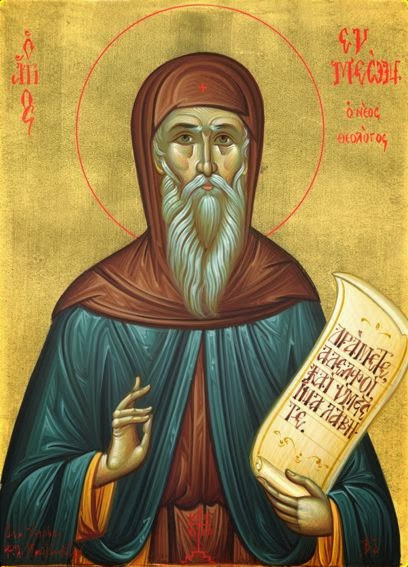
Saint Simeon the New Theologian was born in the year 949 in the city of Galatea (Paphlagonia), and he was educated at Constantinople. His father prepared him for a career at court, and for a certain while the youth occupied a high position at the imperial court. When he was fourteen, he met the renowned Elder Simeon the Pious at the Studion Monastery, who would be a major influence in his spiritual development. He remained in the world for several years preparing himself for the monastic life under the Elder’s guidance, and finally entered the monastery at the age of twenty-seven.
Saint Simeon the Pious recommended to the young man the writings of Saint Mark the Ascetic (March 5) and other spiritual writers. He read these books attentively and tried to put into practice what he read. Three points made by Saint Mark in his work “On the Spiritual Law” (see Vol. I of the English Philokalia) particularly impressed him. First, you should listen to your conscience and do what it tells you if you wish your soul to be healed (Philokalia, p. 115). Second, only by fulfilling the commandments can one obtain the activity of the Holy Spirit. Thirdly, one who prays only with the body and without spiritual knowledge is like the blind man who cried out, “Son of David, have mercy upon me” (Luke 18:38) (Philokalia, p. 111). When the blind man received his sight, however, he called Christ the Son of God (John 9:38).
Saint Simeon was wounded with a love for spiritual beauty, and tried to acquire it. In addition to the Rule given him by his Elder, his conscience told him to add a few more Psalms and prostrations, and to repeat constantly, “Lord Jesus Christ, have mercy upon me.” Naturally, he heeded his conscience.
During the day, he cared for the needs of people living in the palace of Patricius. At night, his prayers grew longer and he remained praying until midnight. Once, as he was praying in this way, a most brilliant divine radiance descended upon him and filled the room. He saw nothing but light all around him, and he was not even aware of the ground beneath his feet.
It seemed to him that he himself became light. Then his mind rose upward to the heavens, and he saw a second light brighter than the light which surrounded him. Then, on the edge of this second light, he seemed to see Saint Simeon the Pious, who had given him Saint Mark the Ascetic to read.
Seven years after this vision, Saint Simeon entered the monastery. There he increased his fasting and vigilance, and learned to renounce his own will.
The Enemy of our salvation stirred up the brethren of the monastery against Saint Simeon, who was indifferent to the praises or reproaches of others. Because of the increased discontent in the monastery, Saint Simeon was sent to the Monastery of Saint Mamas in Constantinople.
There he was tonsured into the monastic schema, and increased his spiritual struggles. He attained to a high spiritual level, and increased his knowledge of spiritual things through reading the Holy Scriptures and the writings of the Fathers, as well as in conversation with holy Elders.
Around the year 980, Saint Simeon was made igumen of the monastery of Saint Mamas and continued in this office for twenty-five years. He repaired and restored the monastery, which had suffered from neglect, and also brought order to the life of the monks.
The strict monastic discipline, for which Saint Simeon strove, led to great dissatisfaction among the brethren. Once, after Liturgy, some of the monks attacked him and nearly killed him. When the Patriarch of Constantinople expelled them from the monastery and wanted to hand them over to the civil authorities, Saint Simeon asked that they be treated with leniency and be permitted to live in the world.
About the year 1005, Saint Simeon resigned his position as igumen in favor of Arsenius, while he himself settled near the monastery in peace. There he composed his theological works, portions of which appear in the Philokalia.
The chief theme of his works is the hidden activity of spiritual perfection, and the struggle against the passions and sinful thoughts. He wrote instructions for monks: “Theological and Practical Chapters,” “A Treatise on the Three Methods of Prayer,” (in Vol. IV of the English Philokalia) and “A Treatise on Faith.” Moreover, Saint Simeon was an outstanding church poet. He also wrote “Hymns of Divine Love,” about seventy poems filled with profound prayerful meditations.
The sublime teachings of Saint Simeon about the mysteries of mental prayer and spiritual struggle have earned him the title “the New Theologian.” These teachings were not the invention of Saint Simeon, but they had merely been forgotten over time.
Some of these teachings seemed unacceptable and strange to his contemporaries. This led to conflict with Constantinople’s church authorities, and Saint Simeon was banished from the city. He withdrew across the Bosphorus and settled in the ancient monastery of Saint Makrina.
The saint peacefully fell asleep in the Lord in the year 1021. During his life he received the gift of working miracles. Numerous miracles also took place after his death; one of them was the miraculous discovery of his icon.
His Life was written by his cell-attendant and disciple, Saint Nicetas Stethatos.
Since March 12 falls during Great Lent, Saint Simeon’s Feast is transferred to October 12.
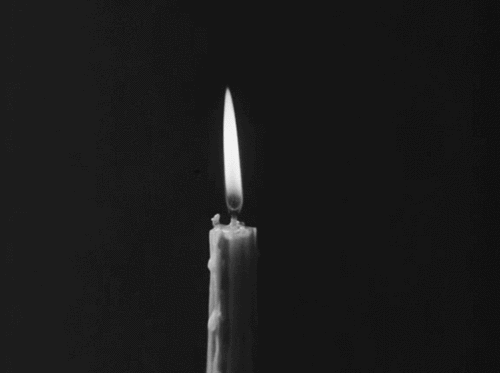
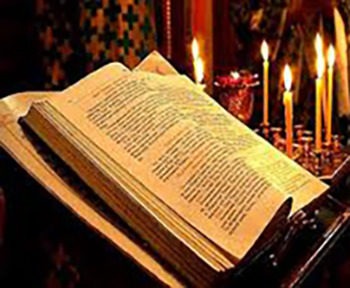
ISAIAH 4:2-5:7
2 In that day the Branch of the Lord shall be beautiful and glorious; And the fruit of the earth shall be excellent and appealing For those of Israel who have escaped. 3 And it shall come to pass that he who is left in Zion and remains in Jerusalem will be called holy—everyone who is recorded among Jerusalem's people. 4 When the Lord has washed away the filth of the daughters of Zion, and purged the blood of Jerusalem from her midst, by the spirit of judgment and by the spirit of burning, 5 then the Lord will create above every dwelling place of Mount Zion, and above her assemblies, a cloud and smoke by day and the shining of a flaming fire by night. For over all the glory, there will be a covering. 6 And there will be a tabernacle for shade in the daytime from the heat, a place of refuge, and a shelter from storm and rain.
1 Now let me sing to my Well-beloved A song of my Beloved regarding His vineyard: My Well-beloved has a vineyard On a fruitful hill. 2 He dug it up and cleared out its stones, And planted it with the choicest vine. He built a tower in its midst and also made a winepress in it. He expected it to bring forth good grapes, but it brought forth wild grapes. 3 “And now, O inhabitants of Jerusalem and men of Judah, Judge, please, between Me and My vineyard. 4 What more could have been done to My vineyard That I have not done in it? Why then, when I expected it to bring forth good grapes, Did it bring forth wild grapes? 5 And now, please let Me tell you what I will do to My vineyard: I will take away its hedge, and it shall be burned, And break down its wall, and it shall be trampled down. 6 I will lay it waste; It shall not be pruned or dug, but briers and thorns shall come
. I will also command the clouds That they rain no rain on it.” 7 For the vineyard of the Lord of hosts is the house of Israel, And the men of Judah are His pleasant plant. He looked for justice, but behold oppression; For righteousness, but behold, a cry for help.
GENESIS 3:21-4:7
21 Also for Adam and his wife the Lord God made tunics of skin, and clothed them. 22 Then the Lord God said, “Behold, the man has become like one of Us, to know good and evil. And now, lest he put out his hand and take also of the tree of life, and eat, and live forever”— 23 therefore the Lord God sent him out of the garden of Eden to till the ground from which he was taken. So He drove out the man; and He placed cherubim at the east of the garden of Eden, and a flaming sword which turned every way, to guard the way to the tree of life.
1 Now Adam knew Eve his wife, and she conceived and bore Cain, and said, “I have acquired a man from the Lord.” 2 Then she bore again, this time his brother Abel. Now Abel was a keeper of sheep, but Cain was a tiller of the ground. 3 And in the process of time it came to pass that Cain brought an offering of the fruit of the ground to the Lord. 4 Abel also brought of the firstborn of his flock and of their fat. And the Lord respected Abel and his offering, 5 but He did not respect Cain and his offering. And Cain was very angry, and his countenance fell. 6 So the Lord said to Cain, “Why are you angry? And why has your countenance fallen? 7 “If you do well, will you not be accepted? And if you do not do well, sin lies at the door. And its desire is for you, but you should rule over it.”
#orthodoxy#orthodoxchristianity#easternorthodoxchurch#originofchristianity#spirituality#holyscriptures#bible#wisdom#saints
4 notes
·
View notes
Photo
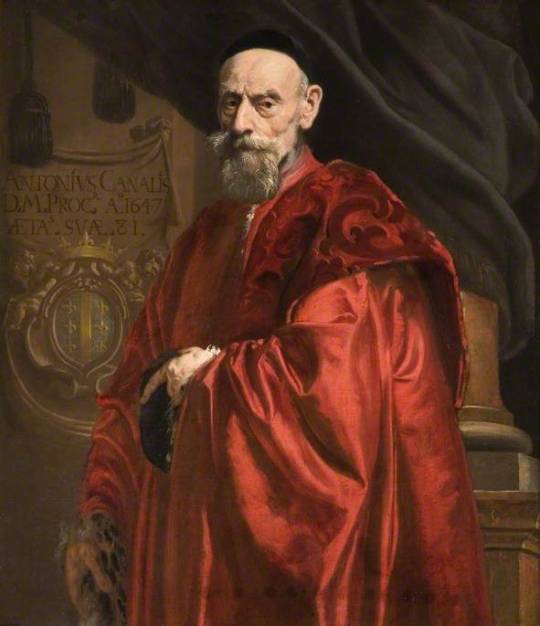
Daniel van den Dyck (Attr.) - Portrait of Antonio Canal - 1647
oil on canvas, height: 113 cm (44.4 in) Edit this at Wikidata; width: 98.4 cm (38.7 in)
Birmingham Museums Trust, UK
Daniel van den Dyck, known in Italy as Daniel Vandich (baptized on 3 December 1614, Antwerp – 1663, Mantua) was a Flemish painter, printmaker, architect and engineer. After training in Antwerp he left for Italy where he first worked in Venice and later became a court painter in Mantua. He was a versatile artist who created mythological and religious scenes, as well as portraits and flower-pieces.
Very little is known about the early life of Daniel van den Dyck. He was born in Antwerp as the son of Jan van den Dyck and Cornelia Kerstboom. He was baptized in Antwerp Cathedral on 3 December 1614. He was registered as a pupil of Peter Verhaeght in the Antwerp Guild of Saint Luke in the guild year 1631-1632. He was registered as a master of the Antwerp Guild of Saint Luke in the guild year 1633-1634. It is assumed that shortly after becoming a master he left Antwerp as he was not involved in any of the large commissions on which Antwerp painters worked in the middle of the 1630s such as the decorations for the Joyous Entry into Antwerp of the new governor of the Habsburg Netherlands Cardinal-Infante Ferdinand and the decorations for the hunting pavilion Torre de la Parada of the Spanish king Philip IV near Madrid.
The artist passed first through Bergamo where he created a few signed and dated portraits. He was in Venice likely from 1634 onwards. Here he married Lucrezia Renieri, the eldest daughter of Nicolas Régnier, a Flemish painter active in Venice who was herself a painter. The couple had three sons. His father-in-law had been active in Venice since 1626 not only as a painter but also as an art dealer and art collector. Clorinda, the younger sister of van den Dyck's wife was married to the prominent Italian painter Pietro della Vecchia (1605-1678). These family ties meant that van den Dyck could rely on a network of Flemish and Italian artists in Venice. This allowed him to gain many commissions for religious paintings in churches as well as for portraits. He painted wall decorations in the Palazzo Pesaro in Preganziol together with his brother-in-law della Vecchia and their respective spouses.
Evidence of the esteem in which he was held in his time is the fact that one of his works - a portrait - was included in the early biographer Carlo Ridolfi's book on Venetian painters of 1648 entitled Le maraviglie dell'Arte ovvero, Le vite degli Illustri Pittori Veneti and dello Stato. He was also praised by Marco Boschini in his La carta del navegar pitoresco of 1660, a panygeric poem about Venetian painting. Boschini dedicated two pages to van den Dyck and represented the artist in a print as Jupiter embellishing Virtue with a royal mantle.
Giovan Francesco Loredano, one of the founders of the Accademia degli Incogniti, a learned society of freethinking intellectuals established in 1630 in Venice, often ordered the illustrations for his multiple writings from van den Dyck, Pietro della Vecchia and Francesco Ruschi.[3] One of these prints was a portrait of Loredano which he made for Loredano's Opere (Collected works).
From late 1657 van den Dyck was living with his family in Mantua. On 2 April of the next year he was named by duke Carlo II Gonzaga as his official court painter, architect, surveyor of his building program and engineer for stage designs for the theatre. He also was made the superintendent of the duke's gallery and tasked with reconstituting the ducal art collection which had become dispersed during the previous two dukes' reign. Possibly his appointment was made on the recommendation of his father-in-law who had provided services to the duke on various occasions. As the prefetto delle fabbriche (surveyor of works) van den Dyck had to move between the various construction sites such as Maderno, Marmirolo, Mantua and Venice, to check the transportation of the many marble statues, inspect the progress and quality of the various construction works undertaken at the ducal palace as well as the suburban residences, ordered supplies and tools, organized the daily assignments of the workers and made sure the duke was informed timely through frequent correspondence. The constant and exhausting travel in this role did not allow van den Dyck to work as a painter, the premier reason for his appointment to the court. This may explain why van den Dyck operated a large workshop with assistants. These assistants would produce his works which he would then 'touch up'.
The date of his death is not known with certainty. It is placed shortly after he drew up his will on 27 June 1662. On 4 April 1663 the duke of Mantua appointed another Flemish painter called Frans Geffels as his new court painter. Van den Dyck's son may have become a painter as his grandfather Nicolas Régnier bequeathed onto him all his prints, drawings and reliefs to study.
22 notes
·
View notes
